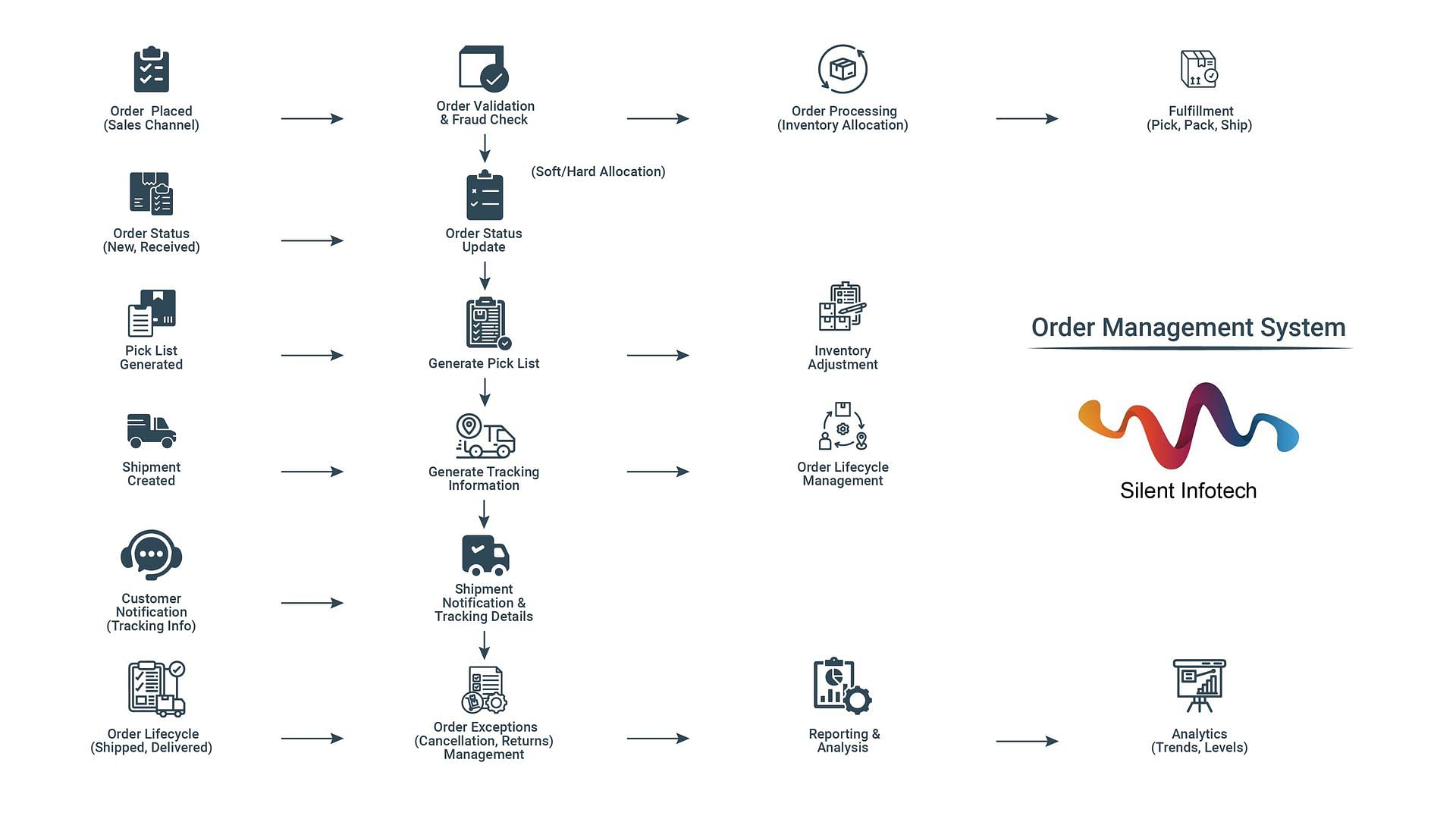When it comes to e-commerce, efficiency is paramount to success. The requirement for
efficient procedures grows as your online business takes off and broadens its customer base.
Manually overseeing orders is no longer necessary; instead, technology has stepped in to
substitute laborious spreadsheets. Let's now dig into E-commerce Order Management
Systems (OMS) that come to the forefront of operation effectiveness in e-commerce sales.
Executive Summary: E-commerce OMS System
While your e-commerce business will be rapidly growing, the operational complexity of sales management, customer data, and inventory levels will increase exponentially. The primitive tools that supported your business at the beginning are no longer enough, but now terrible. The answer is implementing a competent Ecommerce Order Management System, or suffer being overwhelmed with the complexities of expansion.
OMS is no longer just an option for large corporations; it is no longer a choice, it is a
necessity for promising startups that want to scale up effectively. Automation of repeatable
operations, keeping data aligned across different systems and providing excellent
performance metrics in sales are all factors for successful growth.
What is an Order Management System (OMS)?
Competition in the e-commerce world is fierce. There the emphasis is on customer expectations. A consistent, convenient shopping experience isn't just a privilege – it's the foundation of future victories. OMS orchestrates the whole POS processes and guarantees that goods are handled properly, the inventory levels are monitored closely, and customers are constantly updated about their orders.

In the process of growth, your brand will inevitably get more recognition and its market
share will expand. Manual processes get outdated and become unfeasible by then.
Ineffective fulfillment of orders can lead to customers who are not satisfied, a poor
reputation, and damaged chances of growing a business. An OMS is more than what is
thought of as a tool for operation optimization, but rather an imperative element of a
business looking forward to growth.
Key Processes an OMS Can Help e-Commerce Businesses With
The range of an Order Management System is way wider than just taking orders but rather
order processing has many more elements and processes detoured than just a sales
transaction. Here are some key processes that an OMS can help streamline:
Real-time Inventory Management
Discover how exact information about products'
availability and stock levels can be obtained via the whole system with the help of
instant real-time monitoring.
Multichannel Order Handling
Effortlessly process and fulfill orders from various
channels, including Direct to Consumer storefront, marketplaces, large quantities
orders, and resellers websites.
Optimized Fulfillment
Determine the most suitable warehouse for order fulfillment
nearest your competitors, based on inventory levels, planning, and other key
parameters.
Customer Order Tracking
Keep your clients updated about the schedules of their
orders on time by means of timely messages and notices.
CRM Integration
Pull in customer order data from your Customer Relationship
Management (CRM) system for increased information about your customers as well
as better customer care.
Financial Forecasting
Integrate with accounting utilities to get around the financial
forecasting process and optimize resource allocation.
Get FREE Consultation
Things To Consideration When Choosing An OMS Software
Scalability :
Ascertain your business is setting the OMS as an extension of your system
with the capability to grow without compromising performance or functionality.
Integration Capabilities:
Spend some time checking if the platform can be integrated
into the current eCommerce platforms, payment gateways, and third-party
applications.
Customization Options:
Ensure to choose a solution which will comfortably fit your
business needs as well as contain your business processes.
User Interface:
Review the user-friendliness and intuitiveness of the OMS interface
which are arguably the critical factors that may determine successful user adoption
and productivity.
Support and Training:
Determine if the OMS supplier provides a satisfactory level of
customer support and the training resources resource assisting with smooth
implementation and maintenance of the OMS.
The Best Order Management System and Vendor
When considering Order Management Systems (OMS), Odoo rises as a comprehensive and robust platform that interfaces effortlessly with embodied ecommerce sites like Shopify, Magento, and so on. The system is digital and has rich capabilities, while ease of use is its hallmark, providing the business with no worry concerning orders, inventory, or delivery of commodities to its consumers.
Shopify door integration provides bridge between Shopify and Odoo, so all data communication and
processing run seamlessly, and businesses can enjoy streamlined order and inventory management.
Additionally, Odoo harmonizes with Magento, letting vendors transform upon high order instructions
as well as coordinate fulfillment and omni-channel functions while being in the know about their
stock levels at the same time.
As for Odoo in the context of WooCommerce, those two systems combine to give customized
online transaction handling with the incorporation of the variety of features of WordPress. Odoo
takes advantage of WooCommerce, bringing immediate integration. As a result, small, medium, or
big online shop operators can now manage their orders and inventory hassle-free, thereby elevating
the effectiveness of the whole eCommerce operation.
Besides Odoo deep integration in addition, Odoo can also integrate and go beyond these platforms.
The architecture of these platforms does not limit the compatibility of Odoo and allows the creating a
single point where to check, control, and monitor the orders, inventory levels, and shipping. It
leverages the cloud-based infrastructure and offers out-of-the-box analytics and CRM tools. Odoo
attracts the needs of starting and small businesses with its advanced e-commerce management
solution.
Conclusion
An Ecommerce Order Management System is not only a tool for the improvement of
operations but it is a driving force for growth, innovation, and customer satisfaction.
Through the effective use of technology and choosing a suitable OMS solution for your
business, you can map out new efficiency avenues.